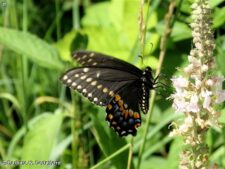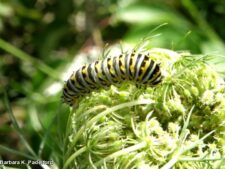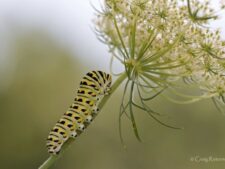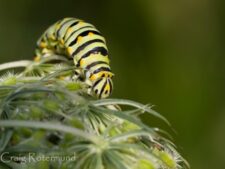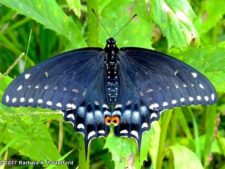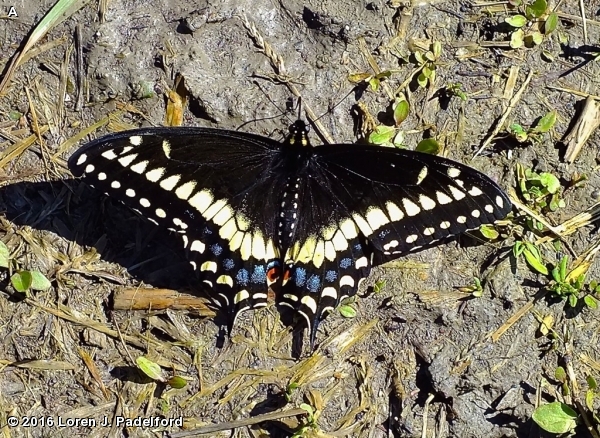
This swallowtail has a wingspan of 3 to 3 1/2 inches. The male is black dorsally with yellow spots along the edges of the wings and a submarginal yellow band. There is an orange eyespot at the base of the hindwing and a row of blue spots radiating out above it. Ventrally, the male has a row of blue spots flanked by 2 rows of orange spots across the hindwing. The female is black dorsally with 2 rows of white spots along the edges of the wings and blue scaling across the wing. She also has an orange eyespot at the base of the hindwing. Both sexes have black “tails” at the bottom of the hindwings. The mature caterpillar is about 2 inches long. It is white to green with black cross-bands on each segment broken by yellow or orange spots. It is relatively smooth. (See photo B which is a 4th instar caterpillar). The 3rd instar is black with a white mid-section and is covered with many orange and black spikes (see Photo C).
This common butterfly is often seen nectaring on flowers especially in the restored prairie area near the Great Marsh in Fontenelle Forest and the prairies at Neale Woods.
Plants in the parsely family host the larvae. In Fontenelle Forest and Neale Woods it can be found on Queen Anne’s Lace, Cow Parsnip and Golden Alexanders. The species overwinters as a pupa. The larvae of this butterfly are parasitized by Trogus pennator, an Ichneumon wasp. The wasp lays an egg in the larva before it spins a chrysalis. It later emerges as an adult wasp from the chrysalis.
Disclaimer: The content of NatureSearch is provided by dedicated volunteer Naturalists of Fontenelle Forest who strive to provide the most accurate information available. Contributors of the images retain their copyrights. The point of contact for this page is: Babs Padelford.

